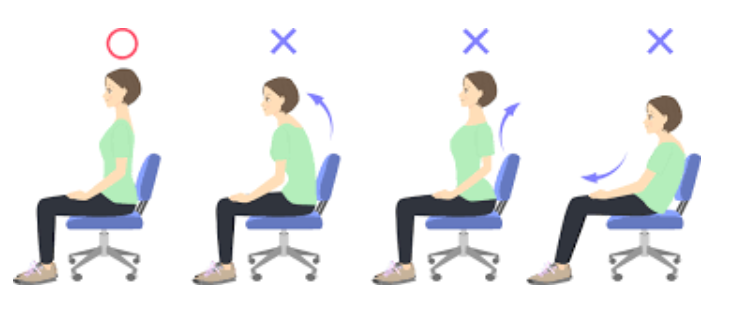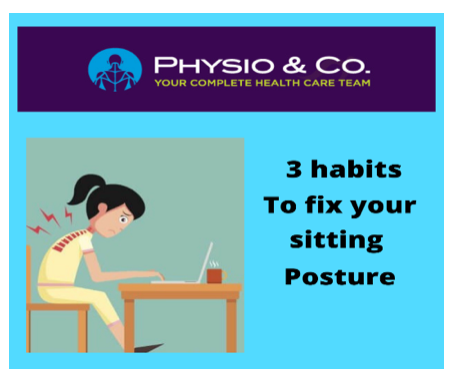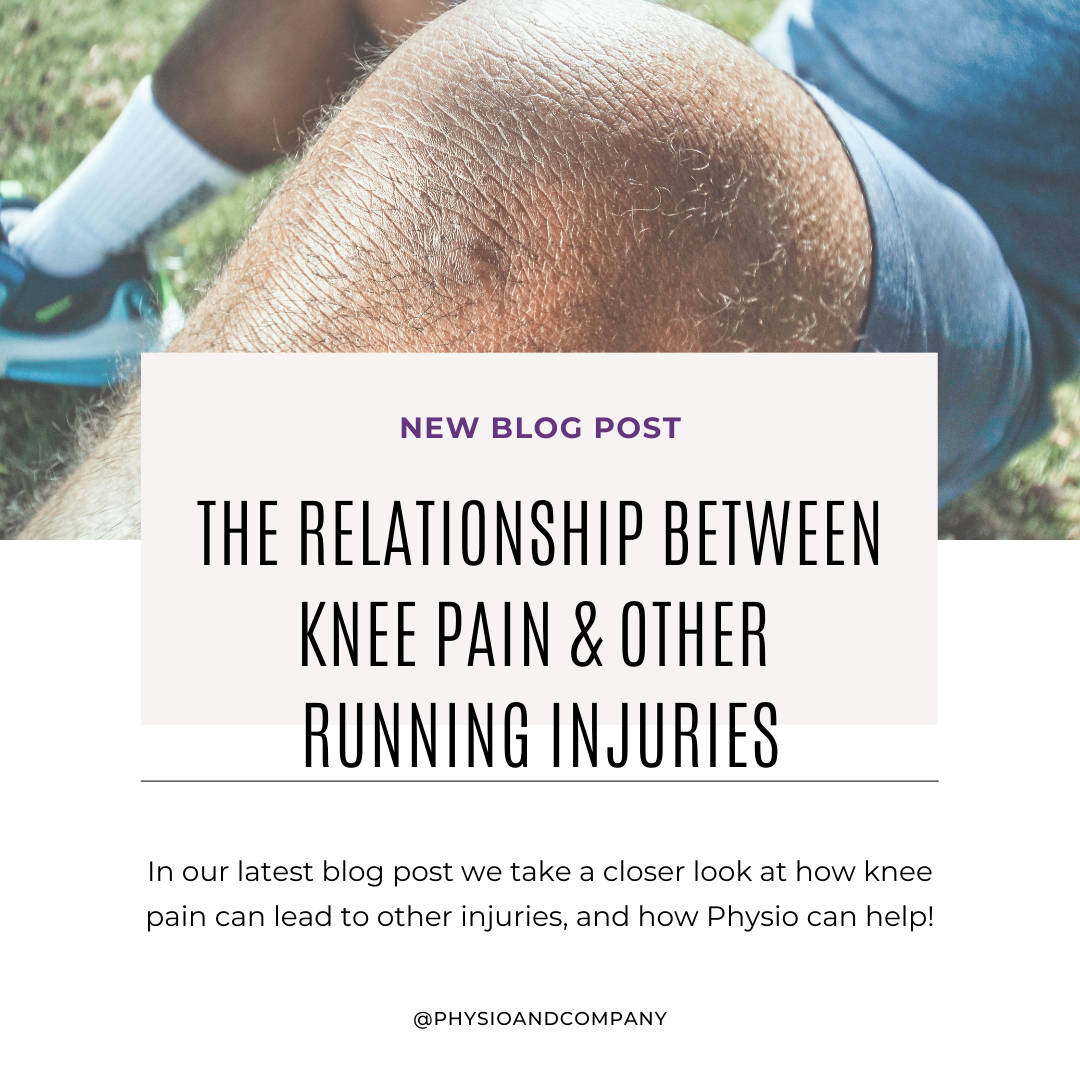Check out this Video from our Instagram page for some easy mobility drills you can do while at your desk!
Improve Your Posture with These 3 Easy Steps
Improve your Posture with 3 Easy Steps
So many of my patients come in concerned about their posture, and want to know how to fix it. There is so much information out there about the proper way to sit, walk, bend. It can be confusing! Well the good news is…there is NO BAD POSTURE. The truth is any constant position is bad, our bodies need movement and changing postures is key. The issues come with repetitive strain, the constant repetitive use of the same muscle groups lead to fatigue and then this results in strains, tendinopathies and PAIN.
Learn how to improve your posture to avoid getting posture related pain and discomfort.

What is a “Good” Posture?
Good posture refers to the position in which the body is held while sitting, standing, or lying down, that is in proper alignment and balance. It involves keeping the body in a position where the least strain is placed on the muscles, joints, and ligaments during movement or weight-bearing activities, allowing them to function efficiently and effectively.
In general, good posture involves keeping the head level, shoulders back and down, chest out, and maintaining the natural curve of your spine. The feet should be planted firmly on the ground, with the knees slightly bent and the weight evenly distributed. Good posture can help to prevent musculoskeletal problems.

Why Should I Be Concerned With My Posture?
Now that we have established there is NO BAD POSTURE, however the repetitive strain of CONSTANT POSTURE. Maintaining poor posture for prolonged periods can have a range of negative effects on the body. Here are some of the most common concerns associated with poor posture:
- Back and neck pain: Poor posture can put extra stress on the muscles and joints in the neck and back, leading to pain and discomfort.
- Headaches: Tension headaches can be caused by tightness in the muscles of the neck and shoulders, which can be exacerbated by poor posture.
- Reduced flexibility: Staying in the same position for long periods of time can lead to reduced flexibility in the muscles and joints, making it more difficult to move comfortably.
- Breathing difficulties: Hunching over or slouching can compress the lungs and diaphragm, making it more difficult to breathe deeply and efficiently.

Step 1: Avoid Constant Postures
- TAKE BREAKS- If you work at a desk take movement breaks every 30 to 45 mins to do some simple stretching movements.
- CHANGE IT UP- Change up how you are doing a task, sit to stand desks can be helpful. If you are completing a repetitive task break it up with short stretch breaks or complete a different task and come back to it.
Step 2: Work On Your Mobility
Taking the time to work on our mobility will help take stress off your postural muscles.
Step 3: Postural Strength Exercises.
Making your postural muscles more resilient and able to withstand the stressors that we place on them through work and recreation will help you avoid injury.
In addition to these easy steps, if the nature of your job requires you to complete repetitive tasks, having Massage and Physiotherapy can help! Want a tailored treatment plan just for you!? Give us a call at (709) 334- 2699 and we can get you started on the road to recovery TODAY.
FAQ
How many years does it take to correct posture?
To see a true change in a muscles length or strength it will take a commitment of consistently making an effort at 3-4 times a week for 6-8 weeks.
What Makes posture worse?
Postural changes are adaptive changes to prolonged stressors. That is why we no longer believe there is one bad sitting or standing posture. The worst posture is a prolonged posture.
What happened is you don’t correct your posture?
If you do not make efforts to make postural mobility and strength a priority, you can have mechanical neck and low back pain and even disc related injuries due to prolonged, repetitive stresses on these tissues.

Chantel graduated from Memorial University with a Bachelor of Science in Kinesiology (honours) and travelled to Ireland to complete her Masters of Science in Physiotherapy.
She is an evidence-based practitioner who is passionate about research. She completed an undergraduate thesis on individuals with multiple sclerosis under the renowned Dr. Ploughman; and completed a published thesis on weight bias and stigmatization of patients, from health care professionals.
She is originally from Placentia and grew up being a very active member of the community- from figure skating, rowing, playing basketball and volunteering. Currently, when she isn’t working, you can find her spending time with her family or attending indoor cycling spin classes.
She is enthusiastic and excited to get you feeling better!










